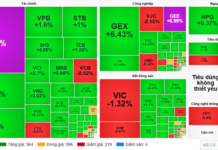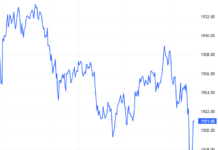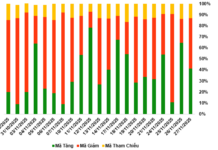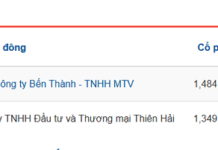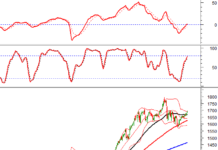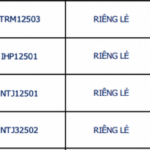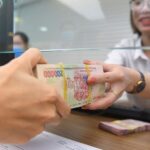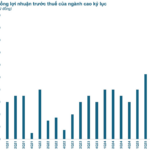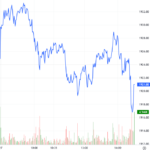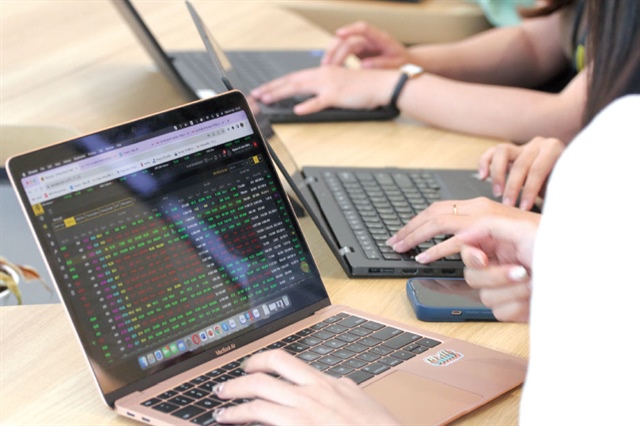
Vietnam’s stock market, a barometer of the economy, is still struggling to reclaim its previous peak. Image: LÊ VŨ |
Macroeconomic Pressures
Despite positive economic growth projections for 2025 and forecasts for 2026, Vietnam’s stock market—a barometer of the economy—continues to struggle in its quest to regain the peak it reached in mid-October 2025. While indices have rebounded over the past two weeks, liquidity remains lackluster, reflecting uncertain market sentiment.
The first challenge facing this investment channel is the rapid rise in interest rates as the year-end approaches. Numerous banks have consistently increased deposit rates over the past month, with major banks joining the fray. The most notable move is raising the six-month term deposit rate to the ceiling of 4.75%/year for Private customers depositing online.
Consequently, a portion of funds from the stock market is shifting to bank savings, partly explaining the weakening inflows into the market over the past month. Many investors remain on the sidelines, concerned that the recent market recovery may not be sustainable.
Tightening liquidity in the banking system has also pressured interest rates. Last week, the State Bank of Vietnam (SBV) net withdrew over 28.5 trillion VND. With banks accelerating credit growth by year-end to meet 2026 targets, deposit rates are expected to rise further in the remaining months of the year.
|
Interest rate pressures may ease from early 2026 as banks complete their 2025 credit growth targets. Seasonal factors before and after the Lunar New Year could boost deposit growth. Policymakers may also expand money supply in late 2025 to support system liquidity and cap rates. |
Inflation risks could resurface due to rising commodity prices, particularly food, amid recent floods and storms in central provinces. Notably, these disasters have severely damaged supply chains, negatively impacting Q4 economic growth and many businesses.
While lending rates may not immediately follow deposit rate hikes—as banks aim to comply with regulatory guidance—forecasts suggest lending rates could rise again from early 2026. This could narrow corporate growth prospects.
Beyond inflation and interest rates, the stock market faces pressure from the USD/VND exchange rate. This week (November 24), the USD surged to 27,900 VND on the black market, the highest since early 2025. Bank rates approached the SBV’s ceiling of 26,400 VND.
The widening gap between black market and bank rates—now nearly 1,500 VND—reflects strong USD demand for year-end imports. Analysts expect rates to cool as the USD weakens. UOB forecasts Q4 2025 at 26,400 VND, Q1 2026 at 26,300 VND, Q2 at 26,200 VND, and Q3 at 26,100 VND.
Overcoming Challenges, Consolidating for the Next Wave—Barring Black Swans
The Federal Reserve’s December 11 meeting may cut rates for the third time in 2025, with a 75% chance of a 25 bps cut to 3.5-3.75%, up from 36% last week.
Interest rate pressures may ease from early 2026 as banks complete their 2025 credit growth targets. Seasonal factors before and after the Lunar New Year could boost deposit growth. Policymakers may also expand money supply in late 2025 to support system liquidity and cap rates.
As of September 25, money supply grew 10.61% year-to-date, double the 4.55% in 2025 and outpacing deposit growth of 9.74%. Money supply typically surges year-end; in 2024, it jumped 6% in Q4, with December alone rising 3.83%.
Markets await a new stimulus package for 2026, especially to offset flood damages. Early November, the SBV issued Directive 9651, urging banks to cut lending rates by 0.5-2% for 3-6 months for flood-affected customers, restructure debts, waive fees, and offer preferential credit for recovery.
China is considering measures to support its property market, including subsidies for first-time homebuyers and transaction cost reductions. In September, it introduced 1% interest rate subsidies on consumer loans to boost spending.
However, investors must beware of potential black swan events from recent China-Japan tensions.
Triêu Dương
– 07:00 27/11/2025
What Does the Surge in Bond Yields Reveal?
Businesses are accelerating their bond issuances, with numerous real estate companies offering double-digit interest rates, peaking at 13.5%. The Ministry of Finance continues to propose enhanced accountability for issuers, requiring clear disclosure of capital usage plans and project risks.
Interest Rates Remain Stable to Bolster Year-End Business and Production Growth
A stable macroeconomic environment, controlled inflation, and increased capital mobilization have empowered credit institutions to reduce costs and maintain competitive lending rates. This strategic financial landscape fosters robust growth in production, business, trade, and services, particularly during the year-end period.
Vietnam’s Stock Market Boom in 2025: A Year of Unprecedented Records
Vietnam’s stock market is poised at a historic crossroads, ready to leap into the “emerging” era. This pivotal moment presents a golden opportunity for ambitious and capable securities companies to rise and thrive.

